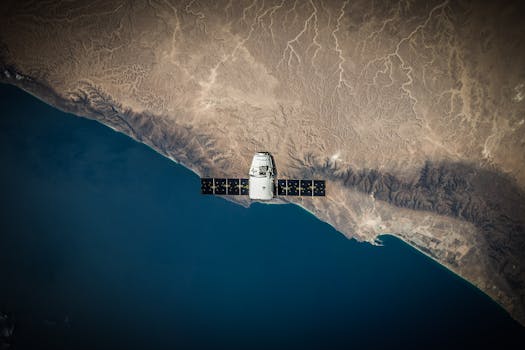
Unlocking the Power of MEO Satellites: Revolutionizing Global Connectivity
MEO satellites, or Medium Earth Orbit satellites, are a type of satellite that operates at an altitude of around 2,000 to 36,000 kilometers above the Earth’s surface. This range allows them to provide a unique combination of global coverage and low latency, making them an attractive option for a wide range of applications, from telecommunications and navigation to Earth observation and scientific research.
MEO satellites have been in use for several decades, but recent advancements in technology have made them more efficient, cost-effective, and accessible. With the increasing demand for global connectivity and the growing need for reliable and high-speed data transfer, MEO satellites are playing a vital role in bridging the digital divide and connecting remote and underserved communities.
The Benefits of MEO Satellites
One of the primary advantages of MEO satellites is their ability to provide global coverage with a relatively small number of satellites. This is because they operate at a higher altitude than Low Earth Orbit (LEO) satellites, which allows them to cover a larger area with a single satellite. Additionally, MEO satellites have a longer lifespan than LEO satellites, typically ranging from 10 to 15 years, which reduces the need for frequent replacement and minimizes the risk of satellite failure.
MEO satellites also offer lower latency compared to Geostationary Orbit (GEO) satellites, which operate at an altitude of around 36,000 kilometers. This makes them more suitable for real-time applications such as voice and video communications, online gaming, and remote desktop connections. Furthermore, MEO satellites can provide higher data transfer rates than GEO satellites, making them an attractive option for applications that require high-bandwidth connectivity.
Applications of MEO Satellites
MEO satellites have a wide range of applications across various industries, including telecommunications, navigation, Earth observation, and scientific research. In the telecommunications sector, MEO satellites are used to provide mobile broadband services, including voice, data, and internet connectivity, to remote and underserved communities. They are also used to provide backup connectivity during natural disasters or network outages.
In the navigation sector, MEO satellites are used to provide location-based services, including GPS, GLONASS, and Galileo. These satellites use a network of satellites to provide accurate location and timing information, which is essential for a wide range of applications, from aviation and maritime to personal navigation and tracking.
Challenges and Future Developments
Despite the many benefits and applications of MEO satellites, there are several challenges that need to be addressed to fully realize their potential. One of the primary challenges is the high cost of launching and operating MEO satellites, which can be prohibitively expensive for many organizations. Additionally, MEO satellites are subject to interference from other satellites and terrestrial systems, which can impact their performance and reliability.
To address these challenges, researchers and manufacturers are working on developing new technologies and innovations that can reduce the cost and improve the efficiency of MEO satellites. For example, advances in satellite manufacturing and launch technologies are making it possible to build and launch smaller, more efficient satellites that can provide the same level of performance at a lower cost. Additionally, the development of new propulsion systems and station-keeping technologies is enabling MEO satellites to operate for longer periods and maintain their position more accurately.
Conclusion
In conclusion, MEO satellites are playing a vital role in revolutionizing global connectivity and transforming the way we communicate and access data. With their unique combination of global coverage, low latency, and high data transfer rates, MEO satellites are an attractive option for a wide range of applications, from telecommunications and navigation to Earth observation and scientific research. As technology continues to evolve and improve, we can expect to see even more innovative applications and uses for MEO satellites in the future.




